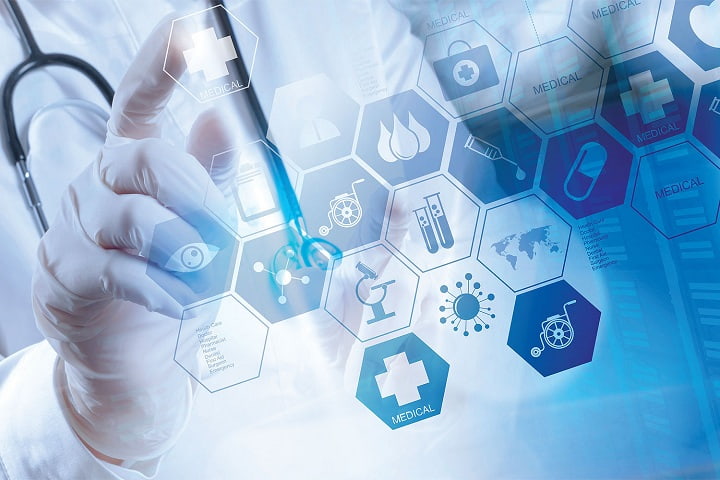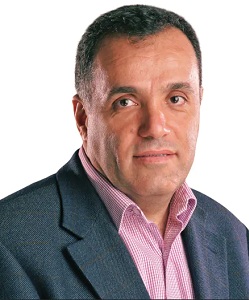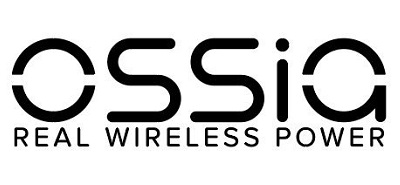-
What improvements can one expect in the overall medical care of a patient with the help of the devices and subsequently the data that comes out of it?
Healthcare professionals rely on many types of data gathering or health alert systems to monitor a patient’s health and vital signs. Most of these systems are limited in that they require the patient to be wired up and stationary at a hospital or clinic. When the device is mobile, they are typically powered by batteries and are bulky; patient compliance is difficult and the monitoring is typically short term. What’s more, many of today’s mobile health monitoring devices are not providing data in real time; the device must be returned for the data to be downloaded and evaluated. For those battery-dependent devices that are Wi-Fi enabled, there can be a burden on the patient to ensure that the Wi-Fi is connected, and there’s still the problem of device size. No one wants to continuously wear a heavy device strapped to their chest or elsewhere.
Wireless power over air overcomes many of these challenges. When a health monitoring device is powered automatically and can send data in real time, medical professionals can be immediately alerted in the case of potentially life-threatening vital signs, even when the patient is at home, shopping, or in their car. Systems can be set up to alert the patient of what to do; caretakers or loved ones can be alerted; even first responders can be called.
What’s more, a wirelessly powered wearable device can be unobtrusive, due to the lack of batteries, which may encourage the patient to wear it as prescribed and for as long as necessary. Continuous ongoing data can provide healthcare providers a more complete picture of health that a three-day or three-hour data collection cannot achieve.
-
When we talk wireless power transforming patient care at remote places, factors like robust internet infrastructure becomes pivotal. How is the industry addressing it?
Whenever there’s a new technology or technology advancement, we see early adopters in first world countries test out different applications in different industries. When electricity was first developed, it was used in libraries, lighthouses and theaters in big cities. As the infrastructure expanded, so did the use of electricity, so that it eventually reached rural areas and undeveloped nations. To this day, we are still expanding the electrical grid to remote and underdeveloped regions around the world.
When W-Fi was invented, we saw a similar trajectory. And now with radio-frequency-based wireless power over air, we expect to see a similar rollout. It takes many players to create an efficient infrastructure, for patient care or otherwise.
As an industry, many tasks are at play at the same time. Different types of wireless power are being tested and developed, partnerships are being created and pilot programs are launching. As we discover what works best, we all work to raise awareness and expand the wireless power ecosystem, so there are more companies supporting different aspects of the innovation. For example, not only do we need the technology for wireless power, but we also need commercial adopters, manufacturers, and a communications network. At this point in time, only RF-based wireless power is tested as safe to use around people and at a distance.
-
What is the periodicity of the patient data generated, and how is the data outflow managed?
With a wirelessly powered wearable health care device, data can be gathered in real time. The data is managed via a private and secure cloud-based system that can be customized to suite the rules and regulations of the industry – in this case healthcare. As long as the device is within a wireless-power-enabled space with adequate Wi-Fi, energy will be delivered to the device automatically, without the need to charge or switch out batteries, and information can be collected. This information can be set up to set off a series of predetermined actions, including patient, doctor, and caretaker alerts.
-
Has the COVID-19 outbreak propelled the need for IoT-driven medical devices, or was this need for transformation sensed even before the pandemic started?
The need for telehealth services has been known by healthcare providers for decades. Many patients are reluctant or unable to visit a hospital or clinic due to a variety of reasons: childcare, work hours, distance, lack of transportation, or even medical symptoms that prevent easy travel (such as migraine, vomiting, fainting, or diarrhea). A transformation has been needed for a long time but breaking out of the status quo in any highly regulated industry is very difficult.
The COVID-19 pandemic has certainly propelled the need for virtual healthcare, including IoT-driven medical devices. Virtual visits and data collection not only decrease the spread of infectious diseases, but they also free up space in waiting and exam rooms. They’re time savers for patients and healthcare providers alike. Saving time is saving money. Innovators in the health and fitness tracker industry have fully embraced the healthcare wearable trend. Medical device innovators are now seeing their opportunity to not only advance home health monitoring systems quickly, but to also offer major improvements by leveraging wireless power over air.
-
Describe the various advancements taking place within the IoT medical device and wireless spectrum.
As we mentioned, the sports and fitness industry has long embraced IoT biosensors and wireless technology to create wearable devices such as wristbands, clip-ons, necklaces and even rings. Biosensors have even been woven into different fabrics and workout clothes to collect data such as the number of steps walked and to deliver recommendations like optimal times to work out based on individual schedule or health data.
In hospital settings, IoT devices are not only being used to monitor patients, but also to track healthcare equipment, such as oxygen pumps, ventilators and defibrillators. They monitor environments, including temperature and humidity, which can be extremely important for vaccines and medications. They are even helping track crucial supply inventory.
Wireless power over air is designed to provide a consistent and dependable energy source at a distance for all of these applications.
Near-field communication is another wireless power technology, but it requires the display and the sensors to be very close with each other to work. This particular power source, while battery-free, still limits medical device manufacturers with the distance the energy can travel. RF-based wireless power has no such near-field limitation.
-
What has been done by the industry to tackle the maintenance of sensors, wireless technology and IoT-run medical devices?
IoT sensors are in every connected device you can think of; there are literally billions of them globally, and the cost of manufacturing them has dropped drastically. The manufacturers that develop sensors have it in their best interest to maintain quality control and open communication with their buyers about any potential hiccups. This includes sensors within IoT medical devices and is a fairly well-established system.
Wireless power technology, on the other hand, is in its early adoption stages and protocols have not yet been established for ongoing maintenance. That said, there has been millions and millions of dollars invested in the testing and certification of wireless power technology over the last two decades. The FCC has certified several wireless power systems for different applications, and some have passed the FCC’s stringent Specific Absorption Rate (SAR) requirements for safety. One has even received European and UK regulatory approval to use wireless power over air without any distance limitations, with more countries on the horizon.
-
When we talk about the penetration of IoT medical devices, is there a specific region that is targeted by the industry, or will these services be available across the world?
As our society grows to become more and more digitally connected, the number of IoT devices increases. In the future, there will be billions and even trillions of sensors within IoT devices across the world that cannot all be powered through wires and batteries – there are simply not enough people to continuously replace the numbers of batteries that would be required on an ongoing basis. Eventually, the need to find an alternate power source will impact everyone, no matter where they are located.
With regard to IoT medical devices, the regions that are targeted first are the ones that have regulatory approval. Currently, certain brands of RF-based wireless power technology have commercial and business use approval in the U.S. by the FCC for specific applications. Also, the EU and UK — all 32 countries — have approved its use at any distance. We anticipate more countries accepting the use of RF-based wireless power in the coming months.
-
What is the industry doing to establish the compatibility of existing medical devices and infrastructure with IoT and wireless solution
Compatibility of any new technology with existing product design is extremely important to expedite adoption. High-level efforts to enhance compatibility are threefold:
- Licensed wireless power technology developers are setting standards for the development of the technology, so that different manufacturers can more easily work together. For example, a wireless power transmitter manufacturer can easily work with another company that is creating receivers, and both can seamlessly work with medical device manufacturers, because they are all using the same playbook. Maintaining and distributing these standards as the technology advances is essential for compatibility.
- RF-based wireless power receivers are extremely small. They can fit within an existing battery space without impacting current medical device design. In fact, they can enable innovators to make devices smaller or fit in more features in the future. In the beginning of adoption, medical device design and infrastructure does not need to change much.
- Wireless power adapters are a likely bridge to enable wireless power for current medical devices. Remember when there were Qi or induction ready “sleeves” for mobile phones, to enable them to be charged on a pad before most mobile phones were manufactured as Qi-ready? Or looking farther back in time, remember when we needed an extension device for our laptops and computers to enable Wi-Fi before it was built in? Wireless power for medical devices will likely roll out in the same way.
Many medical devices already contain some form of connectivity with the IoT systems built into these products that are currently receiving and generating data but still need to be charged with wires or batteries. With wireless power, any of these existing devices could go from needing to be charged and constantly plugged in to being smart and powered over the air.




















